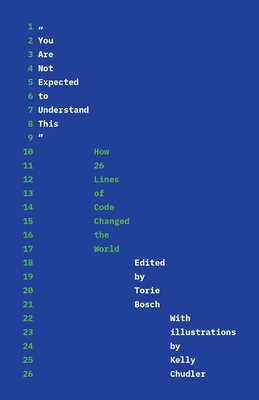More on this book
Kindle Notes & Highlights
by
Torie Bosch
Read between
December 6, 2022 - January 13, 2023
You need the willingness to fail all the time.
By 2000, 80 percent of all code on the planet was written in COBOL. Even today, almost half of American banking systems run COBOL, and 95 percent of all ATM transactions rely on it to function.
how a little-known computational experiment laid the cornerstone for what would become today’s surveillance infrastructure—one that has deeply and negatively affected communities of color across the globe.
The Police Beat Algorithm predominantly addressed four problems associated with police operations: 1) pattern recognition, identifying crime patterns within a set of crime data; 2) profiling, associating crime patterns with probable suspects; 3) dragnetting, linking probable suspects of one crime with past crimes or arrests; and 4) patrol positioning, how to best place patrols within appropriate geographical divisions of the city based on where the most crimes take place and where known criminal suspect profiles predicted who will most likely commit those crimes and where.
crimes like homicide, rape, burglary, larceny, and auto theft were weighted with a score of four, signifying the most severe forms of crimes. Some of the arbitrary—or dare I say biased—nature of these weights can be seen in the lack of weighted differentiation between crimes against humanity like homicide on the one hand, and property crimes like car theft on the other.
It was through this system that the PBA’s racist impact was fully realized. Kansas City’s “Operation Robbery Control”4 was just the first example of how the algorithm led police officials to make the tactical decision to concentrate police personnel and deploy weapons on what was essentially the whole of East Kansas City, which housed the vast majority of the city’s Black citizens.
the Police Beat Algorithm became thousands of similar systems designed and built throughout the seventies, eighties, nineties and beyond. Over the decades, these algorithms have grown to include facial recognition, mobile surveillance, risk assessment, and other such tools used from local law enforcement to international security. The same logics and assumptions that motivated the creation of the PBA more than 50 years ago continue to permeate this array of contemporary law enforcement technologies. Fear of crime—still personified disproportionately by Black and brown people—continues to be
...more
Comparing the AGC to an iPhone is like judging a piece of music based solely by the number of notes on the page. To understand the virtuosity of the Apollo code, it’s important to understand a bit more about the unique system and circumstances for which it was written.
The first practical public-key algorithm was created in 1977 by three MIT researchers, Ron Rivest, Adi Shamir, and Leonard Adelman, and named “RSA” for their initials.
The idea behind RSA is that, as far as anyone knows, it is much easier to multiply two numbers than to factor their product to determine the original numbers.
Simplifying a bit, the receiver’s secret key is a pair of very large prime numbers; the public key, suitable for use...
This highlight has been truncated due to consecutive passage length restrictions.
the first algorithmic principle behind PageRank: pages with many incoming links are likely to be authoritative.
the second algorithmic principle behind PageRank: incoming links from authoritative pages should count for more than incoming links from pages with low authority.


